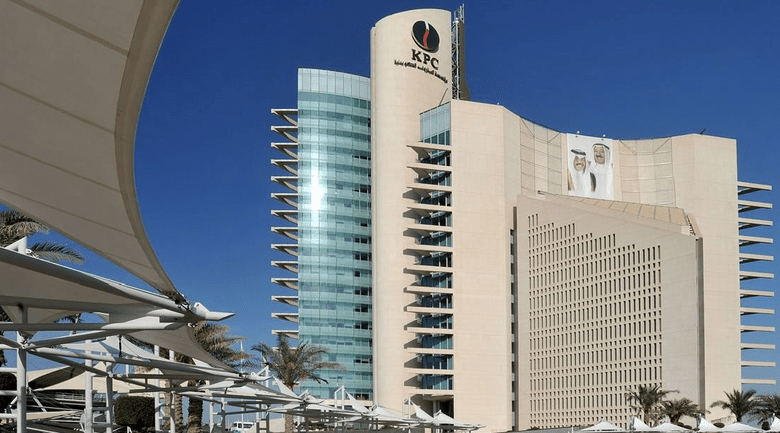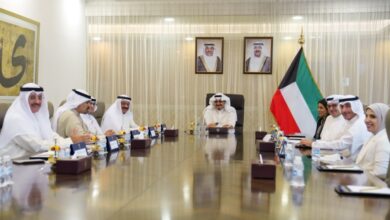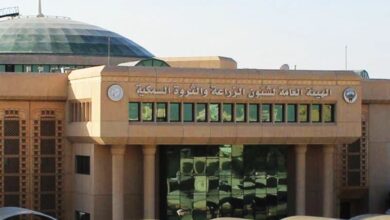Kuwait Petroleum Corporation to install 18,000 EV chargers by 2050
The corporation is currently evaluating the most feasible renewable energy sources to achieve a capacity of 17 GW by 2050, while its current operations rely primarily on a small scale, such as solar panels installed in parking lots and buildings.

• Kuwait Petroleum Corporation aims to recycle 120,000 metric tons of plastic annually, produce 13 million metric tons of second-generation biofuels globally, and generate one million metric tons of green hydrogen.
• Kuwait has allocated $110 billion for the transition, with a commitment to achieve a sustainable crude capacity of 3.5 million barrels per day by 2030 and increase it to 4 million barrels per day by 2035, maintaining this target until 2040.
• Kuwait is the largest importer of LNG in the Middle East, importing 6.57 million metric tons of fuel so far in 2024, surpassing last year’s total of 6.52 million metric tons
According to a source at the Kuwait Petroleum Corporation quoted by S&P Global Community Insights, the company has devised plans to focus on liquefied natural gas, reduce gas flaring, invest in renewable energy, and realign operations at the Al-Zour refinery to meet its goal of achieving zero net emissions by 2050—ten years ahead of the state’s timeline, as reported by Al Rai newspaper.
The source stated that Kuwait has allocated $110 billion for the transition, which includes a commitment to achieve sustainable crude capacity of 3.5 million barrels per day by 2030 and four million barrels per day by 2035 until 2040.
According to the latest survey by Platts from the Commodity Insights agency, Kuwait’s production share in OPEC is 2.41 million barrels per day, with September’s production reaching 2.43 million barrels per day.
The source predicted that oil would remain the dominant source of global primary energy supplies until 2040, noting that the Kuwait Petroleum Corporation would continue to supply crude with the lowest emission intensity globally.
He revealed that by 2050, the corporation aims to install 18,000 charging points for electric vehicles inside and outside Kuwait, recycle 120,000 metric tons of plastic annually, produce 13 million metric tons of second-generation biofuels globally, and generate one million metric tons of green hydrogen.
He pointed out that the corporation is currently evaluating the most feasible renewable energy sources to achieve a capacity of 17 GW by 2050, while its current operations rely primarily on a small scale, such as solar panels installed in parking lots and buildings.
On the other hand, the agency noted that Kuwait is the largest importer of liquefied natural gas in the Middle East, importing 6.57 million metric tons of fuel so far in 2024, surpassing last year’s total of 6.52 million metric tons, according to Commodity Insights data.
900-MW combined gas turbine plant
In April, the Ministry of Finance announced a tender for the construction of a 900-MW combined gas turbine plant at the Al-Sabiya site, with the aim of completing it by 2025. Additionally, bids for the Al-Zour North 2 and 3 projects and the Al-Khairan Independent Power Plant, which has a total generating capacity of 4.5 GW from new installed gas turbines, were underway in August.
The speed of developing new generating capacity will greatly affect the growth rate of demand for liquefied natural gas in Kuwait, especially during the summer months when LNG imports are high, according to a report published by the Commodity Insights Agency on August 27.
Connecting the Al-Zour refinery
Kuwait aims to connect the Al-Zour refinery, which has a capacity of 615,000 barrels per day, to a new petrochemical project that is scheduled to have an annual production capacity of 2.761 million metric tons of aromatics and propylene, along with 1.7 million metric tons of gasoline in the long term, according to the Kuwait Integrated Petroleum Industries Company’s website.
“In the near future, we can replace low-sulfur oil fuels with more sustainable and cost-effective LNG for state-owned facilities. This will allow us to take advantage of the LNG market by purchasing cheaper LNG while exporting oil fuel to higher-demand areas, thus improving overall revenues.”
Regarding gas flaring, he added that the Kuwait Oil Company has reduced total gas flaring to less than one percent since 2020, down from about 17 percent in 2005.
Projects to reduce gas flaring to 1%
The source added that the Kuwait Gulf Oil Company, which manages Kuwait’s share of production in the joint neutral zone with Saudi Arabia, has initiated projects to reduce gas flaring to 1 percent “in the medium term.”
The source also mentioned that the Kuwait National Petroleum Company, which manages refineries, liquefies gas, and distributes products in the country, has installed “effective heaters” and taken other measures to reduce carbon dioxide equivalent emissions by half a metric ton annually.
At a glance
- $110 billion allocated by Kuwait to implement new transformation plans.
- Kuwait’s oil production reached 2.43 million barrels per day last September.
- Kuwait targets 17 GW renewable energy capacity by 2050.
- One percent reduction in gas flaring at Kuwait Oil, down from 17 percent.
- Kuwait plans to recycle 120,000 metric tons of plastic annually.
- 13 million metric tons of second-generation biofuels produced globally.
- One million metric tons generated from green hydrogen.












